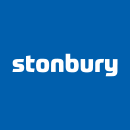Lagoon Repairs
As the main contractor for refurbishment works, a framework client required Stonbury to install a cofferdam system and carry out repairs to a settling tank at a water treatment works.
Initial works saw the removal of reeds and shrubbery from the working area, followed by a wildlife inspection. This ensured no pondlife was trapped within the reeds and if found, could be returned to the water safely.
A temporary dam system was then installed and half of the lagoon was pumped down. The pump was fitted with mesh around the inlet to ensure no wildlife was drawn into the pump and a combi-jetter unit was used to remove any remaining sludge and standing water. The internal floor and walls were then cleaned using high pressure water jetting, prior to a full inspection.
It was vital to ensure the work area remained completely dry during both the application and cure periods, however it was difficult to achieve a fully water tight setup using a cofferdam alone. A secondary dam was built using sandbags and fast setting cement, to provide an extra barrier and keep the working area dry. Sump pumps were also used on site to help with the additional water ingress.
Twenty cracks were identified, cross-hatched and sealed using a pre-formed, elastic membrane. However, deeper cracks required more attention as the water pressure could easily split the overbanding. To prevent this, the larger voids were filled using a fast setting, concrete repair mortar.
Due to the number of cracks found in the substrate, it was important to consider the impact small, hairline cracks could have on the asset in the future. It was decided that a non-soluble, cementitious waterproofing system would be used on the walls to prevent further deterioration and water ingress. Once two coats had been applied to the tank, lengths of dampened hessian were draped over the walls to prevent any failures during the cure period and protect the coatings from the elements.
Following the cure period, the coatings were inspected and signed off and works began to remove the cofferdam. The barrier was removed slowly to ensure water movements were kept to a minimum and no wildlife was harmed. Once the water levels on both sides of the dam were level, the remaining barriers were completely removed, and the asset was handed back to the client.

